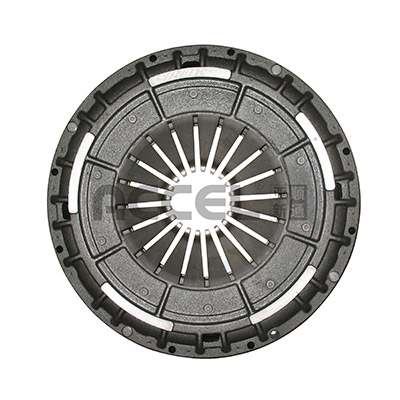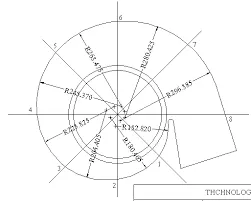Mobile:+86-311-808-126-83
Email:info@ydcastings.com
English
Precision Press Mold Metal & Custom Casting Solutions
- Understanding Press Mold Metal Fundamentals
- Technical Advantages Driving Modern Manufacturing
- Industry Leader Comparison Tables
- Customization Approaches for Specialized Requirements
- Material Selection Guidelines
- Real-World Implementation Scenarios
- Press Mold Metal Evolution and Emerging Trends

(press mold metal)
Understanding Press Mold Metal Fundamentals
Press mold metal technology transforms raw materials into precise components through controlled compression. This manufacturing approach combines hydraulic force with precision-engineered dies to shape brass, aluminum, and specialty alloys. Unlike open mold casting techniques, press molding ensures tighter dimensional tolerances (±0.05mm) and reduces material waste by up to 40%. The closed-die system maintains consistent pressure distribution across the workpiece, critical for automotive and aerospace components where structural integrity cannot be compromised.
Industrial applications prioritize press mold processes for their repeatability - a single die can produce over 500,000 parts with minimal deviation. Manufacturers value this consistency when creating connectors, valves, and complex geometrical shapes that alternative methods struggle to replicate accurately. Recent advancements include computer-controlled pressure sequencing that adjusts dynamically during the forming process, accommodating material flow characteristics in real-time.
Technical Advantages Driving Modern Manufacturing
The mechanical superiority of press mold systems manifests in three measurable benefits:
- Cycle Time Reduction: Automated press lines achieve 15-20 cycles/minute compared to 8-10 in traditional foundries
- Surface Finish Quality: Ra values of 0.8-1.6μm without secondary processing
- Thin-Wall Capabilities: Consistent 0.3mm wall thicknesses in brass mold casting applications
Material utilization reaches 92-95% efficiency versus 65-75% in open mold operations. This optimization becomes critical with copper alloys where raw material represents 70% of production costs. The closed-environment process prevents oxide formation on critical surfaces, eliminating post-production cleaning stages and reducing energy consumption by approximately 18% per unit.
Industry Leader Comparison Tables
Performance metrics across major press mold equipment manufacturers:
| Manufacturer | Pressure Range (tons) | Production Speed (parts/hr) | Multi-Material Compatibility | Tooling Life (cycles) |
|---|---|---|---|---|
| DynaForm Systems | 200-2,500 | 1,100 | Aluminum, Brass, Copper | 700,000 |
| PrecisionCast Technologies | 100-1,800 | 850 | Zinc, Bronze | 550,000 |
| MetalFlow Solutions | 300-3,000 | 1,400 | Specialty Alloys, Steel | 1,000,000+ |
| Vertex Industrial | 50-1,200 | 600 | Aluminum, Copper | 400,000 |
Production cost analysis reveals DynaForm systems achieve ROI within 14 months for medium-volume operations (50,000+ units annually), while Vertex equipment suits prototype development with lower initial investment. Temperature control systems vary significantly - MetalFlow's integrated cooling maintains ±5°C throughout production cycles, critical for aerospace tolerance requirements.
Customization Approaches for Specialized Requirements
Modular die configurations address unique project specifications:
- Multi-Cavity Designs: Simultaneously form 4-32 identical components
- Hybrid Tooling: Combine stamping and casting functions in single operation
- Variable Thickness Inserts: Regulate heat distribution zones
For electronics shielding applications, custom alloys with 78% copper/22% zinc ratios are pressurized at 180 tons to achieve 95% RF attenuation. Medical component manufacturers often specify titanium-reinforced molds that withstand 800°C operating temperatures during brass mold casting of surgical instruments. Recent innovation includes 3D-printed mold inserts that reduce prototype development from 12 weeks to 18 days.
Material Selection Guidelines
Optimal metal choices determined by application parameters:
| Material Type | Tensile Strength (MPa) | Thermal Conductivity (W/mK) | Ideal Applications |
|---|---|---|---|
| CW614N Brass | 340-460 | 121 | Plumbing fixtures, Electrical connectors |
| AlSi9Cu3 | 240-310 | 96-120 | Automotive housings, Heat sinks |
| Pure Copper C110 | 210-345 | 398 | Waveguides, Busbars |
| Zamak 3 | 280-410 | 105-113 | Consumer hardware, Decorative items |
Environmental factors increasingly influence material decisions - CW511L lead-free brass demonstrates 88% recyclability without property degradation. For high-corrosion environments, copper-nickel alloys (90/10 ratio) withstand salt spray testing exceeding 1,500 hours while maintaining mechanical stability under 1,800 ton pressures.
Real-World Implementation Scenarios
Automotive transmission manufacturers reduced component weight by 22% through aluminum press molding, maintaining the same load-bearing capacity as traditional steel parts. Production yields increased from 87% to 98% after transitioning from sand casting to closed-die press systems. Electronics producers of EMI shielding cans decreased secondary machining operations by 75% using precision brass molds that form finished components ready for assembly.
Aerospace valve producers achieved AS9100 certification through automated press lines with integrated coordinate measuring machines. Real-time monitoring systems track dimensional stability across production runs exceeding 100,000 units, with automatic adjustments compensating for tool wear. In consumer goods, manufacturers reduced unit costs by 31% while improving cosmetic surface finishes on brass fixtures through multi-stage press sequences.
Press Mold Metal Evolution and Emerging Trends
Intelligent press systems now incorporate AI-driven predictive maintenance that anticipates die wear patterns 800 cycles before failure occurs. This advancement reduces unplanned downtime by approximately 60% in high-volume press mold metal
production facilities. Sensor-equipped platens monitor temperature gradients and pressure distribution, automatically adjusting parameters mid-cycle to accommodate material variances. These innovations have made the technology particularly valuable for defense contractors requiring fully documented production histories for mission-critical components.
Additive manufacturing integration represents the next frontier - hybrid tooling with conformal cooling channels reduces cycle times by 35% in brass mold casting applications. Sustainable manufacturing initiatives now allow foundries to reclaim 97% of press lubricants through closed-loop filtration systems. As industry demands shift toward smaller batch customization, quick-change mold systems enable production transitions in under 23 minutes compared to traditional 4-hour changeovers - securing the continued relevance of press mold metal technology in next-generation manufacturing ecosystems.

(press mold metal)
FAQS on press mold metal
Q: What is press mold metal casting?
A: Press mold metal casting involves shaping molten metal using high-pressure forces within a closed mold. This method ensures precise detailing and is ideal for mass-producing complex metal parts. It is commonly used in automotive and aerospace industries.
Q: How does open mold casting differ from press mold metal casting?
A: Open mold casting uses an open cavity, allowing molten metal to cool naturally without pressure, resulting in simpler shapes. Press mold casting applies pressure in a closed mold for higher precision. The latter is better for intricate designs and large-scale production.
Q: What are the advantages of brass mold casting?
A: Brass mold casting offers excellent thermal conductivity and corrosion resistance, making it ideal for durable components. It supports intricate designs and is often used for decorative or precision parts. Brass molds also have a longer lifespan compared to some other materials.
Q: Can press mold casting be used with materials other than brass?
A: Yes, press mold casting works with various metals like aluminum, zinc, and steel. Material choice depends on factors like melting point and desired strength. Brass is preferred for applications requiring fine details and corrosion resistance.
Q: What industries commonly use press mold metal techniques?
A: Industries like automotive, electronics, and consumer goods rely on press mold metal casting for high-volume part production. It is favored for creating gears, connectors, and structural components. Open and brass mold variants cater to specialized needs within these sectors.
-
Materials Used in Manufacturing Cap End Pipe FittingsNewsNov.24,2025
-
Material Properties of CF8M CastingNewsNov.24,2025
-
How to Inspect Pump Cap Ends for DamageNewsNov.21,2025
-
Backward Curved Impeller – Efficient Airflow Solutions for Industry | YD CastingsNewsNov.21,2025
-
Automobile Water Pump - Efficient, Quiet, Durable & ElectricNewsNov.21,2025
-
Impeller for Pumps – High-Efficiency, Durable, OEM-ReadyNewsNov.21,2025











